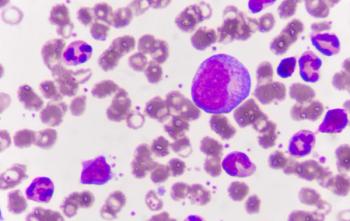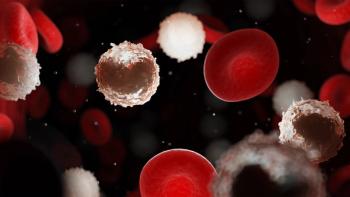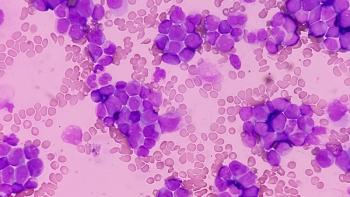
Get to the Root of Cancer Disparities
In order to achieve health equity for patients with cancer, physicians must first understand the root cause of heath disparities, many of which may be invisible. Broadening conversations about health and equity, drawing attention to gaps in care, and prompting urgency on the issues that influence health care are crucial first steps to turn conversation into action.
In order to achieve health equity for patients with cancer, physicians must first understand the root cause of heath disparities, many of which may be invisible. Broadening conversations about health and equity, drawing attention to gaps in care, and prompting urgency on the issues that influence health care are crucial first steps to turn conversation into action.
“When we look at disparities, we often times look at them in the context of race and ethnicity, but looking at further at disparities—removing ethnicity and looking at income, economic status, or education—you’re going to see that cancer mortality rates are higher in poorer populations,” said Chasity M. Washington, MPH, CHES, during a presentation at the
Washington, director of the Center for Cancer Health Equity at The Ohio State University Comprehensive Cancer Center’s James Cancer Hospital and Solove Research Institute, said that a good place to start is by using the available data for good. These data include electronic medical records, cancer registries, and other resources that are available through the American Cancer Society and the Centers for Disease Control and Prevention.
“Use these data to see who is coming through your door, who is in your service area,” Washington said. “Because if your service area is 30% racial or ethnic minorities, but 10% of the patients coming through your door are racial or ethnic minorities, that is not a good thing; that is a disparity. Why are they not coming [to you]? They are [being diagnosed with] cancer, but where are they going? Are they going anywhere?”
Social Determinants of Health
A wide range of health risks and outcomes are affected by the patients’ environmental conditions, such as where they live and work, also known as social determinants of health. Five key determinants make up the framework and include economic stability, education, social and community context, health and health care, and neighborhood and built environment. “All [these determinants] play a role in the outcome of someone’s health regardless of race or ethnicity,” Washington said.
Patients with lower socioeconomic status have higher cancer death rates than those with higher socioeconomic status, regardless of race or ethnicity. Coupled with that, however, is the 2017 U.S. Census Bureau data that demonstrated 21% of blacks and 18% of Hispanics/Latinos live below the poverty line, compared with 9% of non-Hispanic whites.1
Factors playing into the higher cancer mortality rates include access to the continuum of care, education surrounding screening and risk factors, as well as health insurance coverage. For example, 42% of African American women are more likely to die from breast cancer than white women despite having similar incidence rates. The patients within this subgroup often receive a diagnosis at a later stage of disease and experience delays in treatment.2
“Once you get the patient in the door, the equity issue is already there because they are coming with a later stage disease,” Washington said. “They got the diagnosis, but they delayed start of treatment because of a fear of other things or access issues. So, really trying to understand who you are serving and what are their barriers and what are the resources, not only within your hospital, but in the community.”
Engagement with patients once they are inside the clinic is another critical avenue to overcoming social determinants of health. “Clinical trials, biobanking, genetic testing, and counseling, all of these things are cutting edge and great for patients. But if you look at the data, people of color and [other] underserved marginalized individuals do not participate at the rate that they should,” Washington noted.
Implicit bias plays a role in the treatment decision-making process for patients with cancer. A 2016 study from Penner et al demonstrated that implicit racial bias was negatively associated with important aspects of conversations between non-black oncologists and black patients. The results included a significant negative association in communication (P < .01) and interaction length (P = .02). Further, patients who interacted with oncologists with higher implicit racial bias perceived their communication as less patient-centered (P = 0.01) and reported having greater difficulty remembering the contents of the conversation (P < .01), a key factor in determining courses of treatment.3
“You may be presenting [a patient] with a clinical trial and that is sometimes one of the best options, but if you’re not spending enough time with [that patient] and are not spending enough time to address [the patient’s] questions, then they may be less likely to participate or enroll in that study,” Washington said.
Moving Beyond Equality to Equity and Justice
Fixing the system to offer equal access to health care, requires more than providing the tools to the community. It is a multistep process that includes customizing the tools to address inequality, as well as offering equal access to the tools and opportunities.
“You can give everybody the same tools and resources, but not everybody has the same barriers or the same access; [the tools] don’t always get everybody to that same destination, or if they get there, it’s going to take them a little longer or be a little more difficult,” Washington said.
This process begins by understanding the resources available to patients both in the hospital and the community. As the second highest level of influence on health outcomes, according to the social ecological model, community relies on collaboration between organizations and members of the community to address health disparities and their causes to enact change.1
“Just because I live in the same city as you and I can get to the same hospital as you, my job may not let me get off during [clinic hours], or my insurance out-of-pocket expense may be more than yours and I might not be able to budget for that, or I may not have a vehicle to get there and [the hospital] is not on the bus line.” Washington said. “We have to look at those sorts of things and look for opportunities to remove those barriers.”
Adjusting clinic hours, providing assistance such as lay navigators or nurse navigators who can help patients enroll in Medicaid and Medicare, participating in state cancer plans, and using available resources from the American Cancer Society and other organizations are a few places to start, according to Washington. By taking the time to remove the barriers and provide more assistance to patients whose situation may require it, that is what elevates the access to care from equal to equitable.
Leadership at institutions are responsible for creating a culture of equity, according to Washington. “If it does not come from the top down, it is not going to happen,” she said.
Ways for institutions to be proactive about promoting equity includes offering implicit bias training for all members of staff, offering cross-culture training between physicians and nurses, interpreter training, and adding equity measures to the employee evaluation and institutional performance metrics.
References
1. Washington CM. Achieving cancer health equity for the oncology patient. Presented at: 4th Annual School of Nursing Oncology; July 31-August 1, 2020; virtual.
2. Yedjou CG, Sims JN, Miele L, et al. Health and racial disparity in breast cancer. Adv Exp Med Biol. 2019;1152:31-49. doi:10.1007/978-3-030-20301-6_3
3. Penner LA, Dovidio JF, Gonzalez R, et al. The effects of oncologist implicit racial bias in racially discordant oncology interactions. J Clin Oncol. 2016;34(24):2874-80. doi:10.1200/JCO.2015.66.3658
Newsletter
Knowledge is power. Don’t miss the most recent breakthroughs in cancer care.
















































































